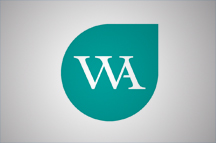 This month, we have seen the debate on Scotland’s independence remerge as Nicola Sturgeon indicated intentions to agree a section 30 order with the UK government, effectively creating the pathway for another referendum. Sturgeon has made clear she wants to hold a vote sometime between Autumn 2018 and Spring 2019, allowing Scots to decide their own future in the wake of Theresa May’s admission that the UK could be heading for a hard Brexit.
This month, we have seen the debate on Scotland’s independence remerge as Nicola Sturgeon indicated intentions to agree a section 30 order with the UK government, effectively creating the pathway for another referendum. Sturgeon has made clear she wants to hold a vote sometime between Autumn 2018 and Spring 2019, allowing Scots to decide their own future in the wake of Theresa May’s admission that the UK could be heading for a hard Brexit.
Unsurprisingly then, many of the same questions that lost the nationalists the referendum in 2014 have resurfaced, creating a hotbed of political risk for investors looking at Scottish assets.
Currency stood out as one of the biggest unanswered questions in the lead up the 2014 independence referendum, with nationalists unable to definitively say what currency would be used in an independent Scotland. Alex Salmond took questions again on this topic during a recent interview with the Financial Times, revealing the nationalist camp could be prepared to deviate from past blueprints, abandoning plans for a currency union with the rest of the UK. He ruled out any intention of joining the euro in the event of EU membership, indicating Scotland could introduce their own currency, either freely floated or pegged to the pound. The realpolitik of Salmond’s proposals are so far unclear, yet will likely be fleshed out by the SNP’s Growth Commission, a group created by Nicola Sturgeon following the Brexit vote and with a remit of exploring the key economic questions left unanswered following the last independence referendum in 2014.

Alongside questions over currency, Scotland’s future relationship with the EU appears just as complex now as it did in 2014. EU membership continues to remain central to the economic case for a viable independent Scotland in the short term, and Nicola Sturgeon is adamant this will happen should Scotland seek independence from the rest of the UK. The First Minister will be aware that seeking EU membership, or at least membership of the single market, will be vital should Scotland look to position itself as an attractive option for UK investors looking for a gateway to the EU, while offsetting potential damage from Brexit. Simon Wren-Lewis, professor of economics at Oxford University, commented, “The economic cost to the UK of leaving the EU could be as high as a reduction of 10 per cent in average incomes by 2030. If Scotland, by becoming independent, can avoid that fate then you have a clear long-term economic gain right there.”
“Many of the same questions that lost the nationalists the referendum in 2014 have resurfaced, creating a hotbed of political risk for investors looking at Scottish assets”
However, the rhetoric from Holyrood differs significantly to that from Brussels. Jean Claude Juncker, President of the European Commission, recently made clear the so-called ‘Barroso doctrine’ still applies, meaning Scotland would be forced to start life as an independent state outside of NATO and the EU. The risks posed from this scenario would undoubtedly have a knock-on effect on FDI levels, especially should this coincide with Scotland being caught in the middle of the UK coming to terms with a hard Brexit.
Despite the clear risks posed to Scots and an apparent lack of enthusiasm for independence displayed in recent polls, the prospect of independence becoming a reality cannot be underestimated. The rhetoric of a hard Brexit and admissions from the Prime Minister that no deal is better than a bad deal is unlikely to sit well with most Scots. After all, Scots resoundingly voted to stay in the EU 62 per cent to 38 per cent. The pro-Union camp is also without an obvious leader. Many of Scotland’s most experienced Labour politicians are now in the shadows following the SNP’s victories at the previous two elections, and the possibility of such a campaign being led by a Conservative or Liberal Democrat remains slim.
For investors, the scenarios outlined above show that navigating the political environment over the coming years will be crucial for anyone looking at assets based in Scotland. The Growth Commission is due to publish its findings in the coming weeks and this will be critical in understanding what type of economic foundation an independent Scotland could be built upon. Equally, with Brexit negotiations set to get underway, the process of understanding how ‘hard’, ‘soft’ or ‘clean’ Brexit is will duly begin. Many heads within Scotland may well agree that now is not the time for Scotland to go at it alone. However, the politics of today show this is no longer the single most important factor to consider when predicting how the electorate will vote, meaning one must consider what way the hearts of many Scots’ will choose when trying to understand the constitutional future of Scotland.














